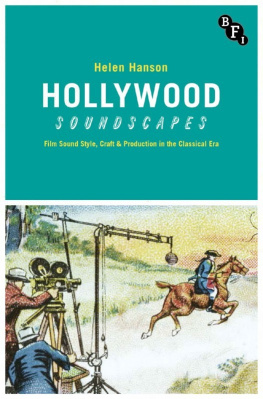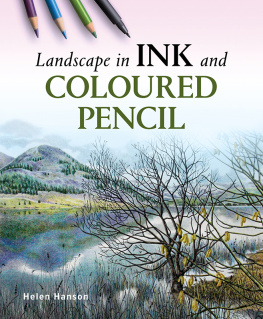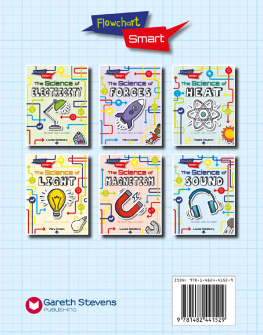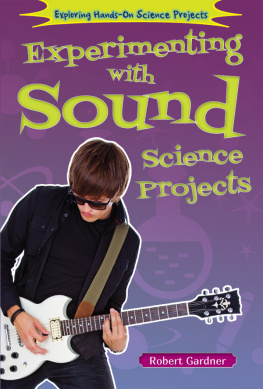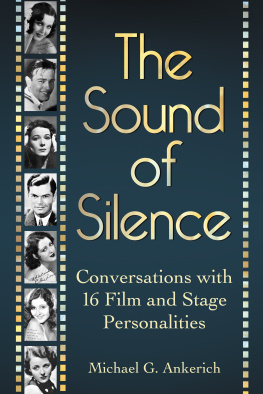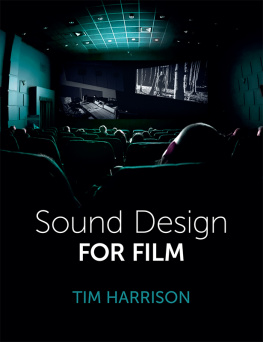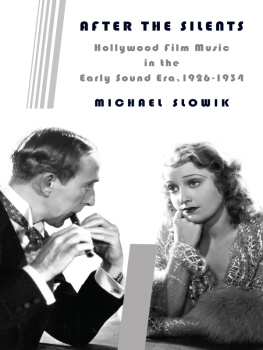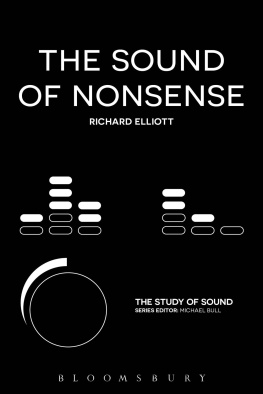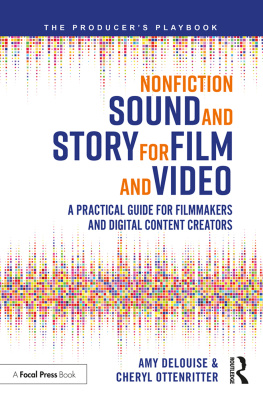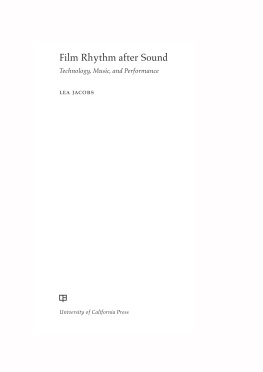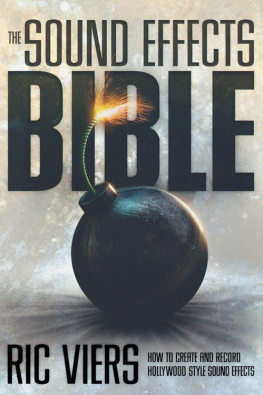Hollywood Soundscapes
Hollywood Soundscapes
Film Sound Style, Craft and Production in the Classical Era
Helen Hanson

Helen Hanson 2017
All rights reserved. No reproduction, copy or transmission of this publication may be made without written permission. No portion of this publication may be reproduced, copied or transmitted save with written permission or in accordance with the provisions of the Copyright, Designs and Patents Act 1988, or under the terms of any licence permitting limited copying issued by the Copyright Licensing Agency, Saffron House, 610 Kirby Street, London EC1N 8TS.
Any person who does any unauthorised act in relation to this publication may be liable to criminal prosecution and civil claims for damages.
The author has asserted her right to be identified as the author of this work in accordance with the Copyright, Designs and Patents Act 1988.
First published in 2017 by
PALGRAVE
on behalf of the
BRITISH FILM INSTITUTE
21 Stephen Street, London W1T 1LN
www.bfi.org.uk
Theres more to discover about film and television through the BFI. Our world-renowned archive, cinemas, festivals, films, publications and learning resources are here to inspire you.
Palgrave in the UK is an imprint of Macmillan Publishers Limited, registered in England, company number 785998, of 4 Crinan Street, London N1 9XW. Palgrave and Macmillan are registered trademarks in the United States, the United Kingdom, Europe and other countries.
Cover image: courtesy of The Bill Douglas Cinema Museum EXEBD 31481 from the cigarette card set How Films are Made produced by B. Morris and Sons, 1933.
Cover design: Kerry Squires
Set by: Integra Software Services Pvt. Ltd.
This book is printed on paper suitable for recycling and made from fully managed and sustained forest sources. Logging, pulping and manufacturing processes are expected to conform to the environmental regulations of the country of origin.
British Library Cataloguing-in-Publication Data
ISBN 9781844575046 (pb)
ISBN 9781844575053 (hb)
For Phil, a great listener, with love, and thanks
Acknowledgements
The research and writing of this book has taken place over a long period of time, and during all the stages of the project, from the initial and nascent ideas, through archival research to finalising the shape and content of the book, I count myself so very lucky and privileged to have had the support and encouragement of a large number of people.
Thanks are due to the British Academy and Leverhulme Trust for a research grant that allowed me to travel to archives in the USA, and to present my work at a number of international conferences. I am also very grateful for a Humanities Research Fellowship at the Harry Ransom Center at the University of Texas, Austin, supported by the Dorot Foundation Postdoctoral Research Fellowship in Jewish Studies. This fellowship allowed me to spend a fantastic month of archival research into the David O. Selznick papers. I am most grateful to all the staff at the Harry Ransom Center who made me welcome and provided me with wonderful support for my research. Thanks to Bridget Gayle Ground, Clare Donnelly, Steve Wilson, Michael Gilmore, Roy Flukinger, Chelsea Withers and all the staff at the HRC Reading and Viewing Room who helped with my research process. I am also very grateful to Jim Buhler for making me welcome in Austin, and for fun times with Natalie Ferris during my trip.
I have been very lucky to meet with such brilliant and knowledgeable archivists during my research. At the Margaret Herrick Library I benefited hugely from the insights and knowledge of Barbara Hall, Jenny Romero, Louise Hilton and Faye Thompson in Special Collections, and all the staff in the Reading Room. Genevieve Maxwell and Jade Takahashi at the Academy of Motion Picture Arts and Sciences Oral History Programme also provided great support for my project. At the University of Southern California, Cinematic Arts Collection, the truly marvellous Ned Comstock gave me invaluable help and advice, and at the Warner Bros. Collection I had wonderful support and help from Sandra Joy Lee Aguilar, Jonathan Auxier, and Brett Service. At the UCLA Performing Arts Collection I had help from Julie Graham, and at the American Film Institutes Louis B. Mayer Library I had the advice of Caroline Sisneros and Patricia King Hanson. In the UK I used collections in the British Library, at the British Film Institute, and collections at the Bill Douglas Cinema Museum at the University of Exeter. Thanks to Sarah Currant and Emma Smart at the BFI, and to Mike Rickard, Gemma Poulton, Angela Mandrioli, Phil Wickham and Christine Faunch at the Bill Douglas Cinema Museum and Heritage Collections at the University of Exeter.
The Department of English and Film Studies, and the wider College of Humanities at the University of Exeter, have provided support in many forms. I have been able to attend international conferences, undertake research trips and have benefited from periods of study leave which gave me time to pursue archival research, and to work on the final manuscript of the book. I have been able to test out aspects of my approach to classical Hollywood sound in my teaching at postgraduate and undergraduate level, and I have benefited greatly from the chance to work through ideas with students. My colleagues in the Department of English and Film Studies have provided constant and steady encouragement, from initial ideas through the long research process for the project. I would particularly like to thank Pascale Aebischer, Karen Edwards, Gabriella Giannachi, Jo Gill, Jason Hall, and Jane Spencer for their interest and encouragement.
Thanks to my Exeter Film colleagues, past and present, who have enthused with me about the research: Ranita Chatterjee, Felicity Gee, Sally Faulkner, Fiona Handyside, Will Higbee, Danielle Hipkins, Joe Kember, Song Hwee Lim, James Lyons, Steve Neale, Dan North, Debra Ramsay and Lisa Stead. I am particularly grateful to Joe Kember, who kindly read the manuscript and gave me invaluable input, to Steve Neale for many discussions about the project from beginning to end, and for his precise insights, and to Lisa Stead, for discussions about methodology and for her encouragement and great friendship.
The project has been nurtured by the wider connections I have made at conferences and through academic networks over the years, I am very grateful to Jay Beck, Eric Dienstfrey, Kevin Donnelly, Ruth Farrar, Ian Gardiner, Julie Grossman, Nick Hall, Nessa Johnston, Ilario Meandri, Katie Quanz, Martin Shingler, Andrew Spicer, Sarah Street, and Neil Verma.
My friends and family have given me unending support and encouragement, and listened patiently to stories from the research trail. I want to thank my friends Gaby Johnson and Mark Conrad, Bryony Dixon, Lynne McDonagh and Jorg Hensgen, Ruth Gidley, Sarah OBrien, Jenny Harris and Jess Hall for the warmth of their friendship, their steady faith in me, and for life away from my desk. Thanks to my dear family:
Don, Ed, Sue and Liz Hanson, Eddie and Dan Sangha, Judith, David, Isabelle and Dan Hill, and Shirley and George Wickham. And finally, deep gratitude and love goes to Phil Wickham husband, research mentor, writing coach, editor, and best friend for his time, patience and many kindnesses that smoothed the road to the end of the book.
The author and publishers would like to thank the copyright holders for permission to reproduce the following copyright material:
Excerpts from the archival files of I Am a Fugitive from a Chain Gang and Cheyenne granted courtesy of Warner Bros. Entertainment Inc.
Next page
